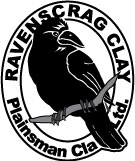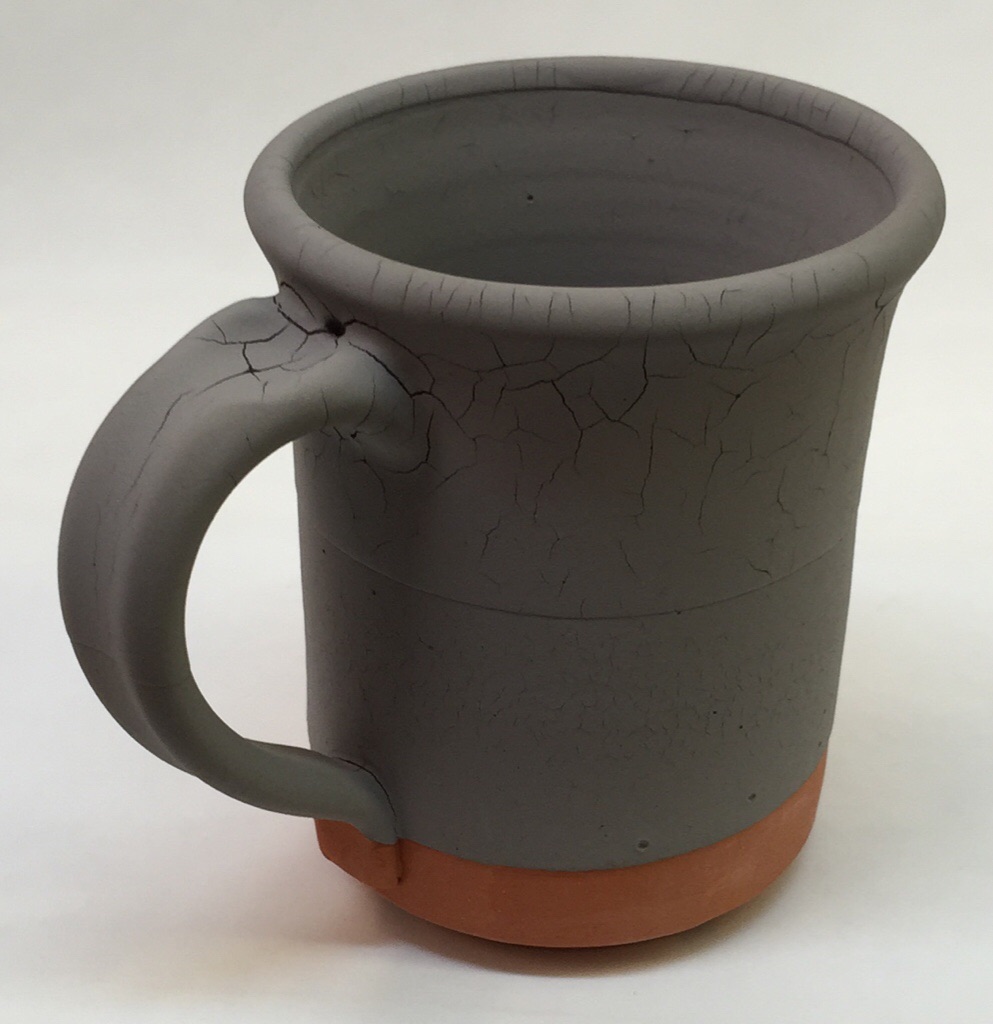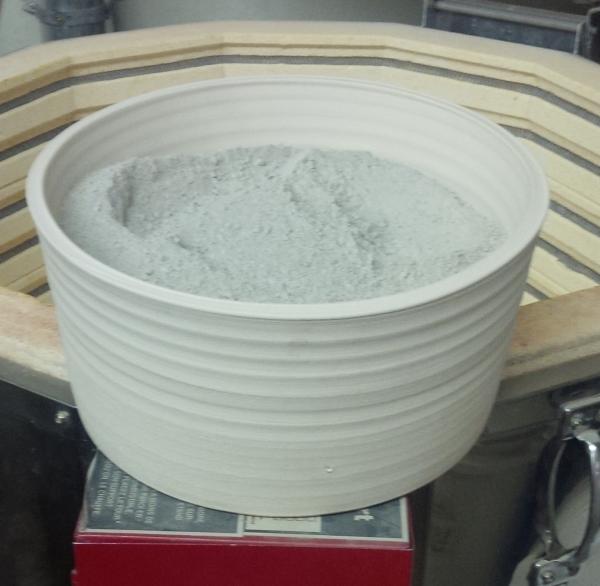

If we demand clay bodies with great working properties, why do we not demand the same of our glazes?

If your glaze cracks on drying like this, it will crawl on firing. Calcine some of the Ravenscrag.

Calcine it like this.
You May Need to Calcine Some of Your Ravenscrag Slip
Ravenscrag slip is a silty clay, thus it has a relatively low drying shrinkage. As such, high percentages can be tolerated in glazes and slips before excessive shrinkage causes drying cracks. Even pure Ravenscrag can be successfully used if not applied too thick and water content is not too high. But cracking can occur where the layer is thicker and the proportion is high. It makes sense to optimize these recipes by calcining some of the material. For example, you might try a 75:25 raw:calcine mix to supply the Ravenscrag called for by the recipe.
We roast it to 1000F, high enough to destroy the plasticity (firing higher than that can calcine it, sintering particles together and creating grit). Use a firing rate and hold-time-at-1000F appropriate for the wall thickness and size of your bisque vessels (e.g. 500F/hr and 30 minutes for thin walled small vessels, slower and longer hold for large ones). Watch for black powder remaining in the center as an indication of insufficient roasting.
Adjusting percentages: This roasted material has an LOI of about 3% (vs. 9% for the raw powder). This difference can be ignored in most cases. But if you want to be more precise, use 3% less of the roasted powder (multiply the amount by 0.97). For example, suppose you need 1000 grams of a 50:50 raw:cacline Alberta Slip mix for a glaze recipe. Use 500 raw and 500*.97=485 roast. Then watch how the slurry performs and adjust the proportions if needed (more roast if the glaze cracks on drying or more raw if it is drying too powdery or not bonding well).
Ravenscrag Slip is a product of Plainsman Clays and near Ravenscrag, Saskatchewan, Canada.
